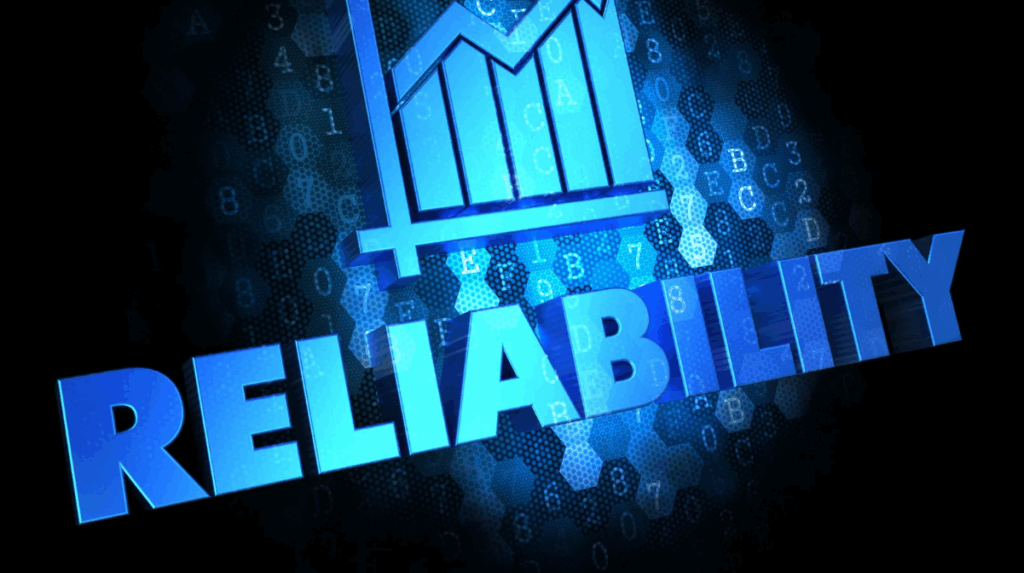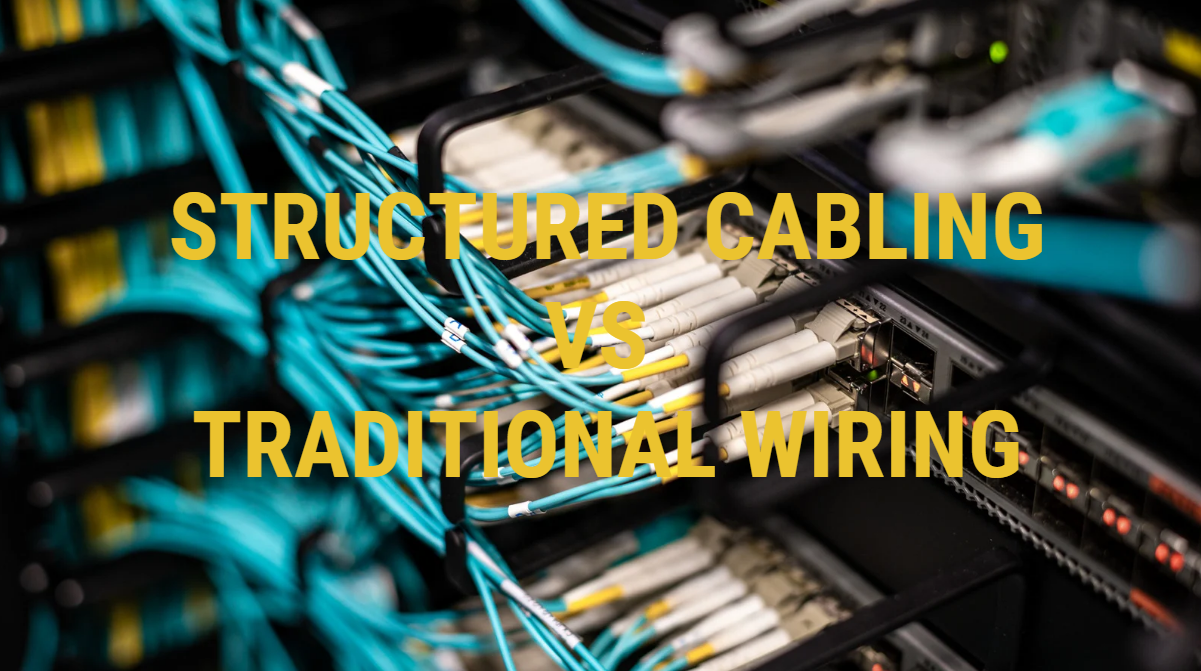In today’s digital-driven world, a stable and efficient network isn’t just an advantage—it’s the backbone of every modern business operation. Whether you’re managing a corporate office, retail store, or data center, your network infrastructure determines how well your technology communicates, how efficiently your systems perform, and ultimately, how smoothly your business runs.
When building or upgrading that infrastructure, one key decision often comes up: Should you stick with traditional wiring or invest in structured cabling?
At first glance, traditional wiring may seem more affordable, especially for smaller setups. However, as your organization grows and technology evolves, that initial saving can turn into long-term frustration and hidden costs. Structured cabling, on the other hand, is designed with growth, organization, and reliability in mind.
This article explores the real differences between structured cabling and traditional wiring—helping you understand which option truly saves you more in the long run.
The Basics: Structured Cabling vs Traditional Wiring
Before comparing costs and benefits, it’s important to understand how each system works and what sets them apart.
What is Structured Cabling?
Structured cabling is a standardized system designed to support multiple hardware uses, making your network more organized and easier to manage. It consists of components such as horizontal cabling, backbone cabling, patch panels, outlets, and telecommunications rooms—all working together under industry standards like ANSI/TIA/EIA.
Each cable and connection point is labeled, neatly arranged, and strategically planned for future scalability. This makes structured cabling the preferred choice for businesses, data centers, and institutions that need high-speed connectivity and seamless integration across devices.
What is Traditional Wiring?
Traditional wiring, often called point-to-point cabling, connects devices directly to each other or to the network equipment. It’s a less organized, more ad-hoc approach—common in older buildings or small setups. While it can work for limited systems, it quickly becomes cluttered and hard to maintain as the network grows.
Key Differences at a Glance:
| Feature | Structured Cabling | Traditional Wiring |
| Design | Standardized, organized | Random, point-to-point |
| Scalability | Highly scalable | Limited |
| Maintenance | Easy to trace and manage | Time-consuming |
| Performance | Consistent and high-speed | May degrade over time |
| Cost Efficiency | High ROI over time | Low initial cost, high upkeep |
Structured cabling may require more upfront investment, but its design efficiency and long-term performance make it a smarter choice for growing businesses.
Cost Comparison: Upfront vs Long-Term Investment
When choosing between the two, cost is often the first concern. It’s true—traditional wiring usually costs less initially, but that’s only part of the story.
Upfront Costs
Traditional wiring is appealing for small installations because it doesn’t require complex planning. Cables are simply connected where needed, reducing immediate labor and material costs. However, this lack of structure leads to inefficiencies later on.
Structured cabling, in contrast, involves design, labeling, and testing by certified installers. While the initial investment may be higher, this professional setup reduces future costs related to maintenance, downtime, and expansion.
Hidden Costs of Traditional Wiring
Over time, point-to-point systems create chaos—tangled cables, interference, and difficulty identifying connections. Each time your business adds devices, rearranges workstations, or experiences downtime, costs accumulate. Troubleshooting becomes time-intensive, often requiring full rewiring or service interruptions.
Long-Term Savings with Structured Cabling
Structured cabling minimizes these problems. Its organized layout allows for:
- Reduced downtime due to faster problem identification
- Simpler upgrades without disrupting existing systems
- Lower maintenance costs
- Greater ROI as your system supports future technology without major changes
Ultimately, while traditional wiring seems cheaper at first, structured cabling pays for itself within a few years through efficiency and reliability.
Performance and Reliability: Meeting Modern Demands

Today’s business environment depends on speed, bandwidth, and stability. Video conferencing, cloud computing, smart security systems, and IoT devices all rely on strong network performance.
Traditional Wiring Limitations
Traditional cabling setups often struggle with high bandwidth demands. Unorganized cables can cause signal interference, crosstalk, and inconsistent data speeds. Moreover, when a connection fails, identifying and fixing the issue becomes tedious, impacting productivity.
Structured Cabling Advantages
Structured cabling systems are built for high performance and reliability. Each cable follows precise standards, ensuring minimal interference and consistent connectivity. They can handle data, voice, and video transmissions over one system—supporting fast, stable communication across your entire network.
Structured cabling also complies with TIA/EIA and ISO/IEC standards, meaning you get guaranteed performance and compatibility across future technologies. For businesses that depend on reliable uptime, structured cabling delivers a measurable performance advantage.
Scalability and Future-Proofing: Growing with Your Business
Growth is inevitable for most organizations. When you hire new employees, expand to new floors, or adopt new technologies, your network must evolve with you.
Traditional Wiring Challenges
Adding new devices to a traditional wiring setup often requires re-routing cables or installing new lines—a process that disrupts workflow and adds labor costs. Because there’s no structured plan, scalability is limited and messy.
Structured Cabling Advantages
Structured cabling is designed for change. Its modular layout means you can easily add or move devices without major rewiring. Whether you’re upgrading to higher-speed connections or integrating smart technologies, structured cabling provides the flexibility you need.
This makes it a future-proof investment—a one-time infrastructure that adapts to new hardware, technologies, and company growth without repeated overhauls.
Maintenance, Troubleshooting, and Downtime: The Hidden Cost Factor

Maintenance and troubleshooting often determine how much your network truly costs over time.
Traditional Wiring Issues
In a traditional wiring system, cables are often unlabeled and tangled. When something goes wrong, technicians must manually trace each line—a time-consuming process that extends downtime. This not only delays operations but can also result in lost business and reduced productivity.
Structured Cabling Efficiency
Structured cabling, on the other hand, is built for simplicity. Every cable and connection point is clearly labeled and organized. When a problem arises, it can be identified and fixed within minutes, not hours.
This level of efficiency drastically reduces downtime, lowers maintenance labor costs, and ensures consistent business continuity.
The Downtime Cost Reality
Every minute your network is down costs money—through lost communication, unprocessed sales, or interrupted workflows. Structured cabling’s reliability and traceability help prevent such losses, reinforcing its value beyond just installation cost.
Aesthetic and Safety Benefits: Order Meets Compliance
While performance is essential, the physical condition of your network cabling also plays a major role in safety and maintenance.
Traditional Wiring Concerns
Messy, unorganized cables aren’t just unsightly—they can be hazardous. Poor airflow leads to equipment overheating, tangled wires increase fire risks, and unstructured layouts may violate building or IT safety codes.
Structured Cabling Solutions
Structured cabling systems prioritize neatness and safety. Organized racks and labeled pathways ensure:
- Improved airflow, reducing equipment strain
- Easier access for upgrades or inspections
- Compliance with safety and fire codes
A clean, organized setup also reflects professionalism and instills confidence in clients and partners visiting your facility.
Environmental and Sustainability Considerations

In an era where sustainability matters, structured cabling aligns with eco-friendly goals better than traditional wiring.
Traditional Wiring Drawbacks
Frequent rewiring and cable replacements contribute to material waste. Outdated cables are often discarded instead of being repurposed, adding to environmental impact.
Structured Cabling Sustainability
Structured cabling has a longer lifespan—usually 10 to 15 years—meaning fewer replacements and less waste. Its compatibility with energy-efficient systems like Power over Ethernet (PoE) and smart building technologies further supports sustainability goals.
By reducing the need for constant replacements and minimizing power inefficiencies, structured cabling helps businesses reduce their carbon footprint while maintaining high performance.
Real-World Scenarios: Where Structured Cabling Proves Its Worth
- Corporate Office Expansion: A company with 50 employees installs structured cabling during office setup. When it grows to 150 employees, new devices are added effortlessly through existing panels—no downtime, no rewiring.
- Educational Institutions: Schools and universities rely on structured cabling to support Wi-Fi, smart classrooms, and security systems across multiple buildings. It allows seamless connectivity for thousands of users.
- Data Centers: Data centers are prime examples of structured cabling efficiency. Organized patch panels and standardized layouts allow technicians to manage thousands of connections without confusion or service interruptions.
- Small Businesses: Even small offices benefit. While traditional wiring may seem cheaper at first, structured cabling eliminates future reinstallation costs—making it the more affordable option long-term.
These real-world scenarios show that regardless of business size, structured cabling ensures consistency, flexibility, and cost efficiency.
Making the Right Choice for Your Business

When weighing both systems, the answer depends on your long-term vision.
If you only need a short-term, low-cost setup for a very small operation, traditional wiring might suffice temporarily. But if your goal is to build a reliable, scalable network that supports business growth, structured cabling is the clear winner.
The Bottom Line:
- Traditional wiring: Low upfront cost, high long-term expense.
- Structured cabling: Higher initial investment, lower lifetime cost and downtime.
Structured cabling ensures future readiness, compliance, and easier management—saving both money and stress over time. With technology evolving rapidly, investing in structured cabling today prevents unnecessary upgrades tomorrow.
Final Thoughts: Invest Smart, Connect Strong
Structured cabling is more than a network—it’s an investment in your business continuity, efficiency, and future growth. It delivers cleaner installations, consistent performance, and the flexibility to adapt to new technologies without costly overhauls.
In contrast, traditional wiring might seem economical at first, but its maintenance challenges and scalability limitations often cost far more in the long run.
At Efficient Lowvolt Solutions, we design and install structured cabling systems that grow with your business—ensuring robust, secure, and future-ready connectivity. From planning to installation, our experts ensure every cable supports your performance goals today and tomorrow.
Invest smart. Build strong. Choose structured cabling that stands the test of time.

